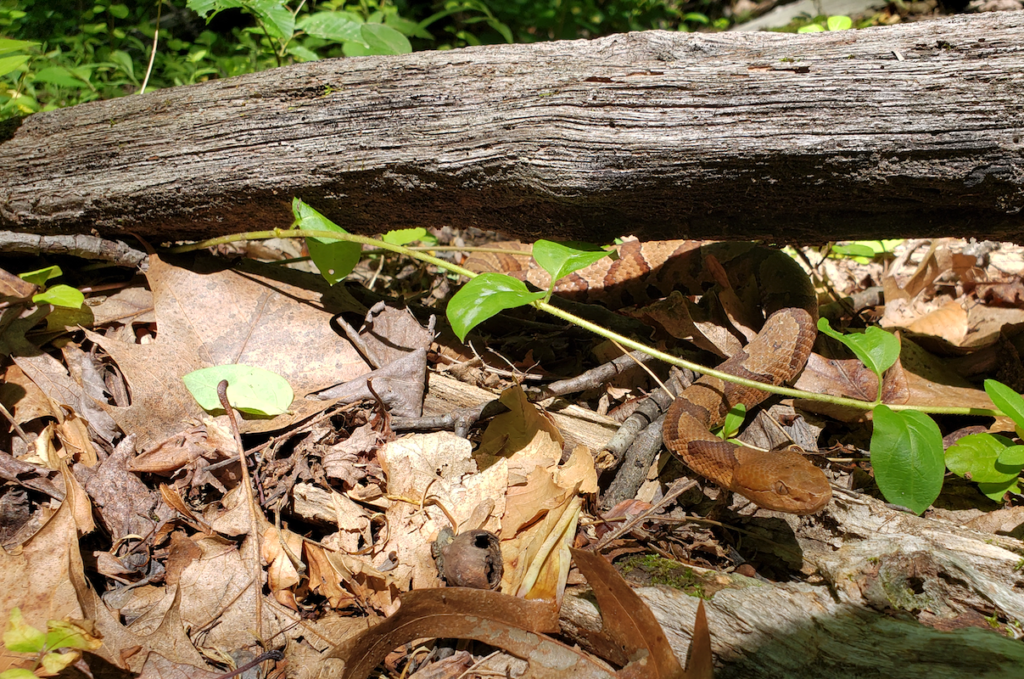We never know what call we’re going to get when our hotline rings and this one from Friday was certainly unexpected. Just after freeing a snake from deer exclusion netting the day before we got this report of a “Copperhead” entangled in erosion control netting right in the middle of a Harford County neighborhood. We were skeptical since many people assume incorrectly that any snake with markings is our only local venomous snake here in our region of Maryland, the Copperhead, and most of our reports are other much more common harmless species. After receiving photos though, we saw those iconic “Hershey Kiss” shaped side markings, sure enough, it was an Eastern Copperhead!
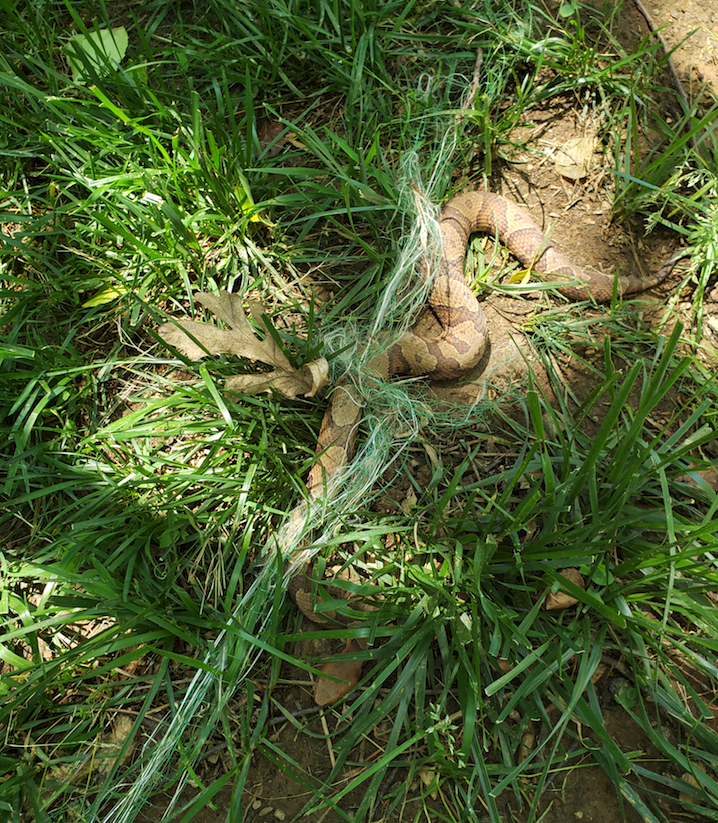
Now knowing what we were dealing with and gathering the appropriate safety equipment, we dispatched to see if the snake could be saved after having been trapped for several days. We met with the community member who reported the snake to us after not receiving any help from other sources and he took us to the snake. Incredibly, the Copperhead was close to a busy road and only feet from a jogging trail which happened to be shaded enough that the snakes chance of survival would be greatly increased during the warm temperatures we were experiencing. Our guess is that the snake’s natural camouflage helped it remain undetected from harm during that time as so many of these snakes are killed on sight. As the photos indicated, it was wrapped in plastic erosion control netting that is commonly used in landscaping when grass seed to planted.
WARNING: PLEASE DO NOT ATTEMPT TO DIRECTLY HANDLE A VENOMOUS SNAKE UNLESS YOU HAVE PROPER TRAINING. THIS SNAKE WAS ONLY BRIEFLY HANDLED BY OUR EXPERIENCED TEAM SO THAT IT COULD BE FREED FROM HARM.

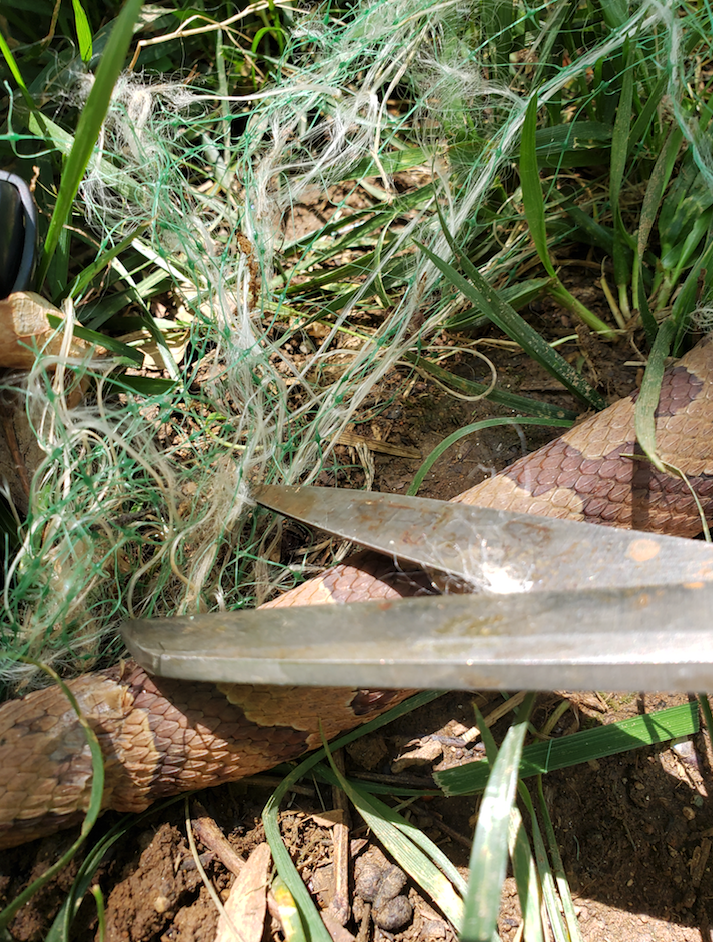
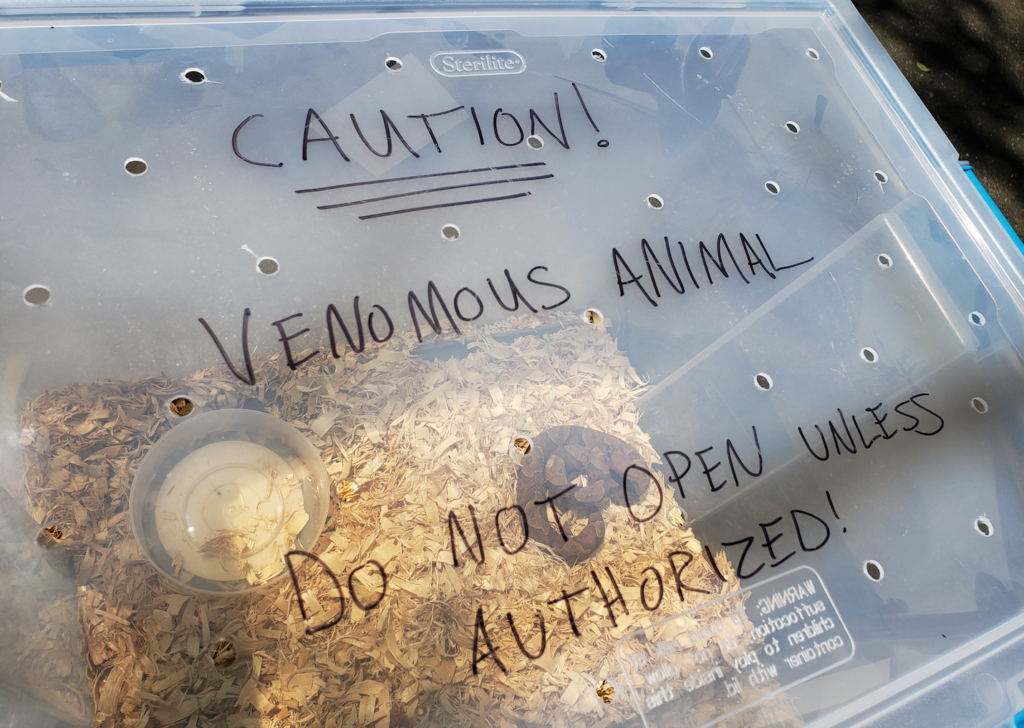
Even though Copperheads are not a particularly defensive species and usually just flee when threatened (we spent two years researching that very question, “How likely is a Copperhead to strike?”, more on that soon!), we treat every species of wildlife as if they will bite. Since this snake was trapped and fighting to survive, the likelihood of a strike was much higher than usual. While our mission is to protect wildlife, our safety has to come first, as a Copperhead bite can be serious and will result in a trip to the hospital. Our first step was to safely secure the head so that we could work on freeing the body from the plastic netting. Using a plastic tube designed for venomous snake research and handling, we allowed the snake to slowly enter the tube on its own by slipping the tube towards its head while lightly securing the body with a snake hook. The snake readily entered the tube up to the point where it could not back out of it on it own and we were safe to continue the work of freeing it. Quickly, we cut out the netting where it was wrapped around its body, inspecting it for any open wounds or deep injuries. Luckily we found none and determined that the snake was still active and appeared free enough from any permanent injury that it could be immediately released.
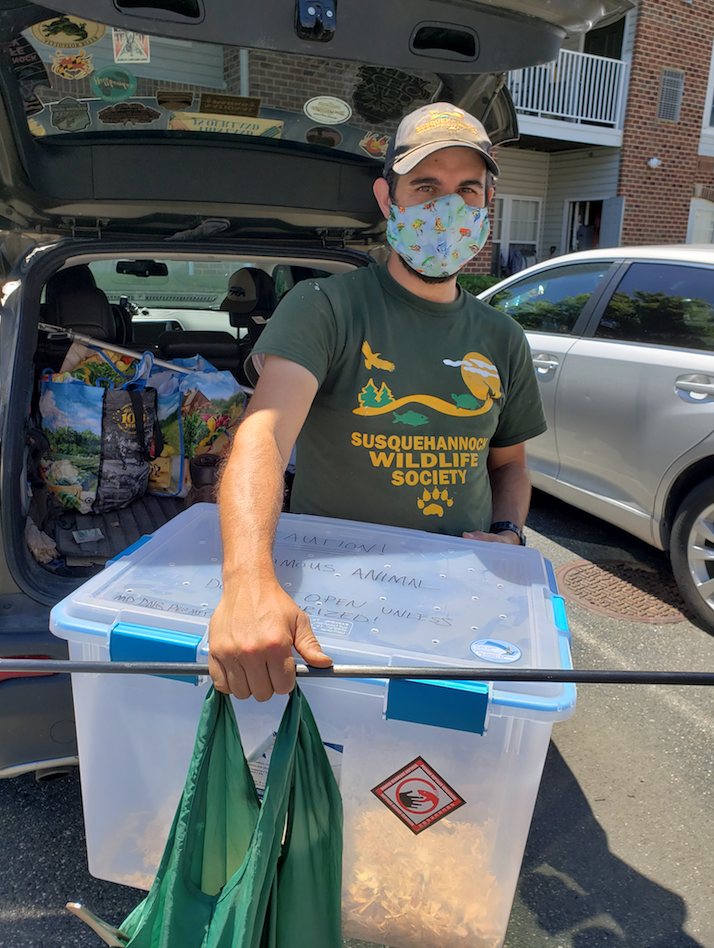
We transferred the Copperhead to a secure container for transport and decided to release it in a more wild area within the same watershed that it could potentially have reached on its own but that would greatly reduce the chance of it coming into contact with people or more landscape netting.
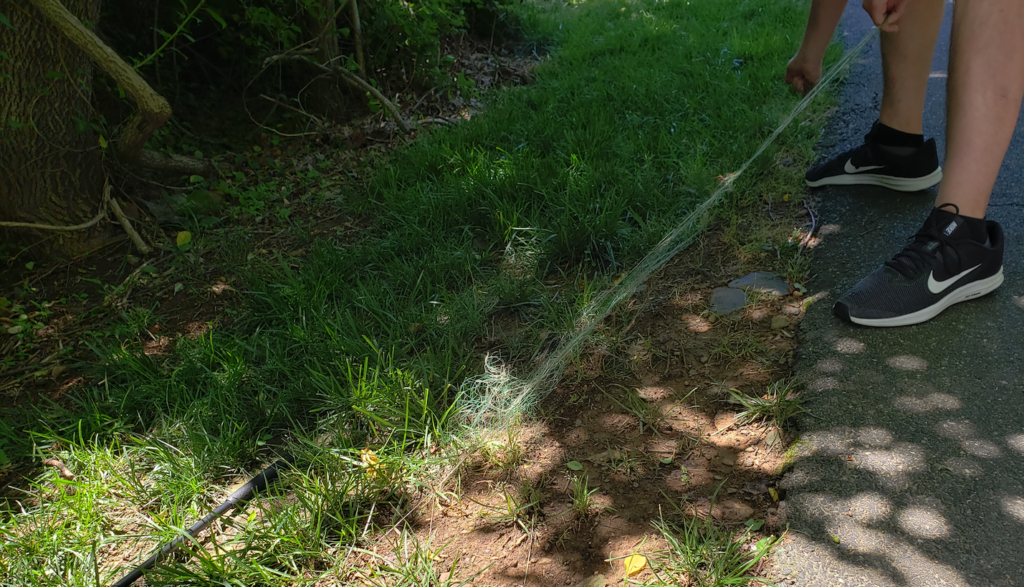
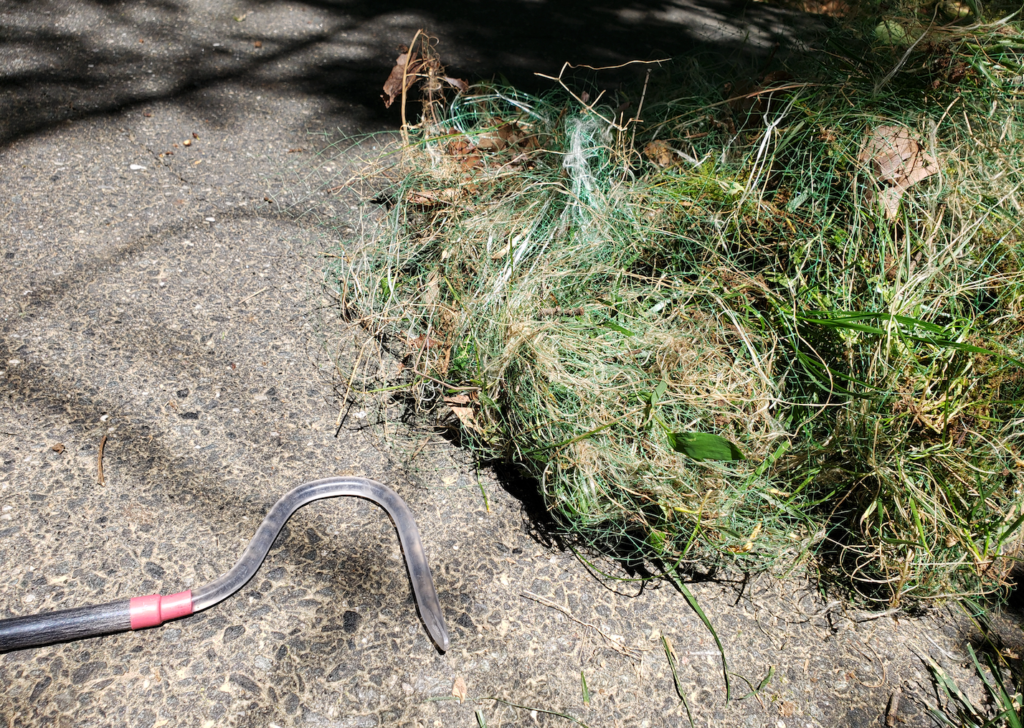
With the help of community member, we pulled up as much of the netting as we could and since most of this type of netting is left in place after grass planting is completed, we advised that the homeowner’s association have someone remove it and more eco-friendly options (see below) are encouraged for future projects.
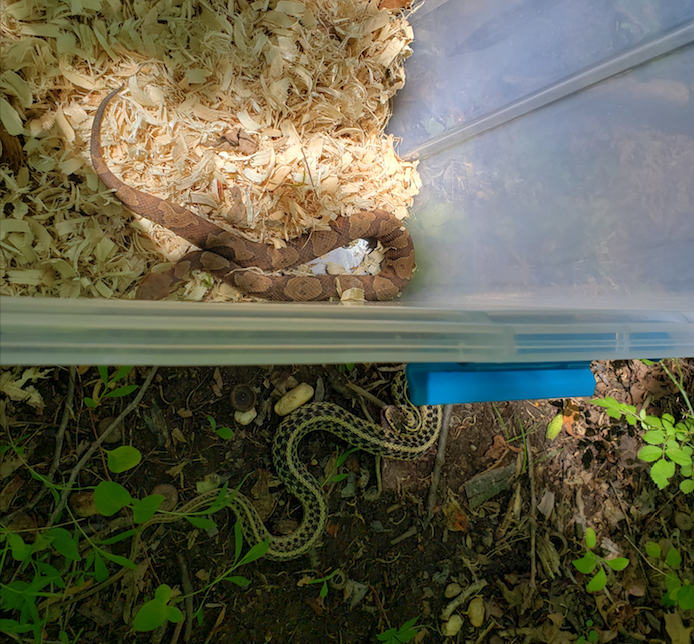
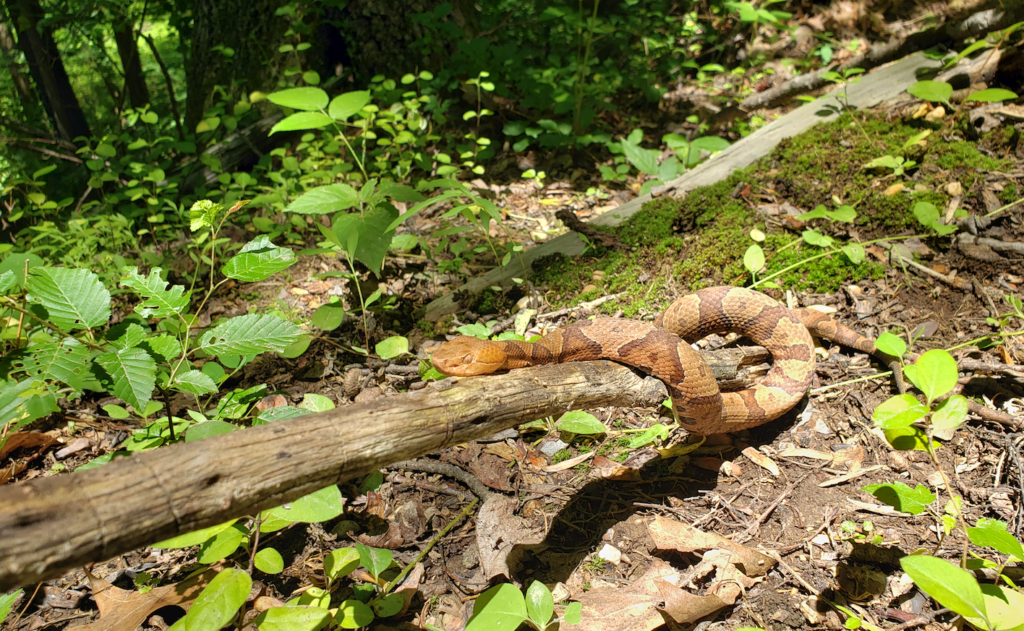
As we have stated before, landscape netting, pond netting for herons, and deer exclusion fencing with small holes, especially the light weight plastic type, can have unintentional impacts on wildlife. Please remove this material if you have it already installed and consider materials with larger openings that keep deer and groundhogs out but allow smaller species to pass safely. For landscaping / erosion control – natural biodegradable materials, products without netting or netting with larger openings 3″ or larger are recommended. Snakes are not only protected by law in Maryland but are incredibly valuable to our ecosystem, and even our backyards, keeping other species such as rodents that can spread diseases in check. You don’t have to like snakes but we ask that you don’t kill them, EVEN VENOMOUS ONES, and help protect them from being harmed.
